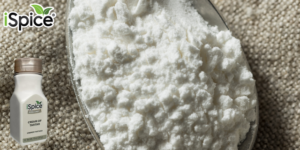The Many Uses of Cream of Tartar
 When it comes to baking, you’ve likely seen this white powder in the spice aisle of your local grocery store — but are you familiar with its many uses? Cream of tartar — also known as potassium bitartrate, or PBT for short — is a common ingredient in baking powder, and it’s an integral part of meringues and whipped cream. But unless you’ve been doing some serious cleaning in your kitchen, you might not be aware that this humble ingredient actually has quite a few practical uses to help you make your meals and desserts taste ten times better than they normally do!
When it comes to baking, you’ve likely seen this white powder in the spice aisle of your local grocery store — but are you familiar with its many uses? Cream of tartar — also known as potassium bitartrate, or PBT for short — is a common ingredient in baking powder, and it’s an integral part of meringues and whipped cream. But unless you’ve been doing some serious cleaning in your kitchen, you might not be aware that this humble ingredient actually has quite a few practical uses to help you make your meals and desserts taste ten times better than they normally do!
One of the most popular ways to use cream of tartar is to stabilize whipped egg whites for meringue or cakes. When added to beaten egg whites (about 1/8 teaspoon per egg white), it helps keep the foam stable, as well as keeping the meringue light and fluffy. This is why you’ll see it used in recipes like lemon meringue pie and angel food cake, as well as snickerdoodle cookies.
As Levy Frances explains, it’s also a boon for candy makers who often work with sugar syrups that need to be cooled to brittle peaks. Adding a small amount of this acidic salt to the syrup reduces cooling times and allows more of the sugar to be crystallized into smaller particles.
Another important role for this salt is to prevent the formation of clumps of sugar that can cause caramels, fudges and other baked sweets to harden and become crumbly when stored. If you’re making something with a lot of sugar, it’s worth adding a little bit of cream of tartar to the recipe to help your hard work last longer in storage.
For baked goods that have liquid in them — such as cakes or quick breads — you can substitute a teaspoon of cream of tartar for every half cup of liquid called for in the recipe, says Randhawa. That’s a great option for those of us who prefer to use less buttermilk or yogurt in our baked goods, too.
If you’re in a pinch and need to replace cream of tartar for an upcoming bake, Lucas suggests substituting lemon juice or white vinegar instead. This will give the same results as if you’d used the powder in your recipe, but it will add a slightly different flavor to your final product, she notes.
Baking powder is another common replacement for cream of tartar in baking recipes that call for baking soda as a leavening agent, according to Lucas. A blend of baking soda and cream of tartar, this is an ideal substitute for a lot of baking recipes because it contains the same acidic properties as cream of tartar in lower quantities, but with the benefits of baking soda to ensure your baked goods rise.
As a bonus, this ingredient has an infinite shelf life as long as it’s kept in a cool, dry place and isn’t exposed to heat or humidity. Check it’s freshness by looking at its color and smell — a powdery, bright white appearance with a mildly acidic odor is a good sign.